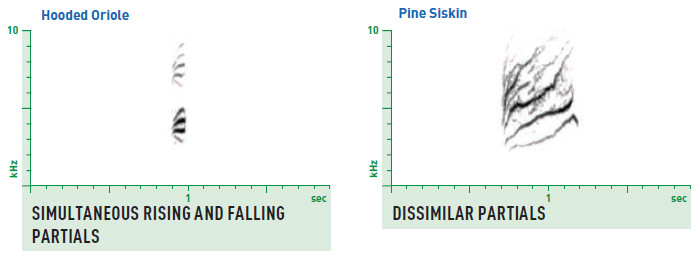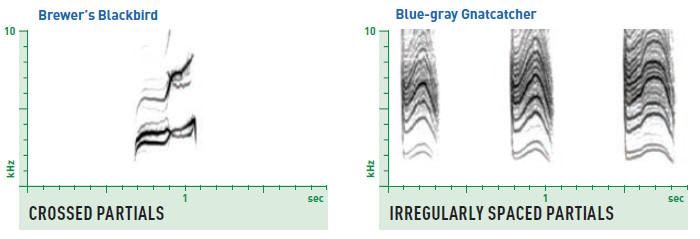Polyphonic sounds
(Peterson Field Guide to Bird Sounds, interactive version of p. 23)
Many birds can produce two separate sounds simultaneously, one from each lung. When birds use this ability, the two original sounds blend into one polyphonic sound. Polyphonic sounds generally look similar to nasal sounds on the spectrogram, but they usually show one or more of these telltale signs, illustrated below:
- Simultaneous rising and falling partials;
- Stacks of partials with dissimilar shapes;
- Partials that cross each other;
- Partials that are irregularly spaced.
Pine Siskin:
Blue-gray Gnatcatcher (Western):
Polyphonic sounds are diverse, but with practice, they can be consistently distinguished from all other types of sounds. Most often, they sound either distinctively metallic or distinctively whiny.
If the polyphonic notes are very brief or contain monotone segments, they tend to sound metallic, like the Hooded Oriole call above, certain calls of Red-winged Blackbird, and the jangling melodies of thrushes like the Veery. If the polyphonic notes do not contain any monotone segments, they tend to have a whiny quality, like the Pine Siskin and Blue-gray Gnatcatcher calls above, as well as the common calls of House Finch.
(Next: pp. 24-25: The naming of bird sounds)

